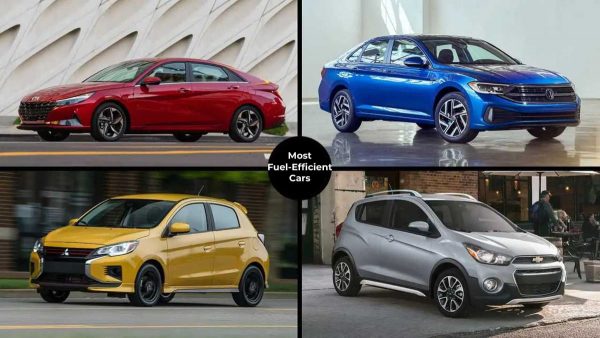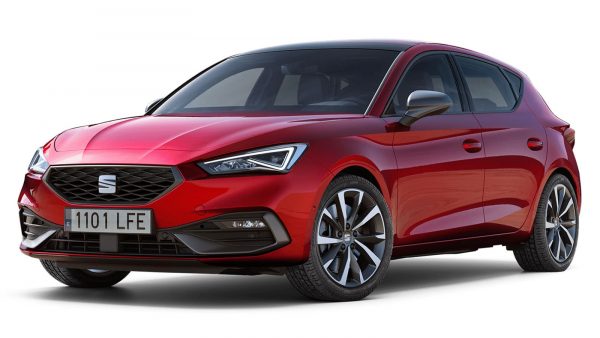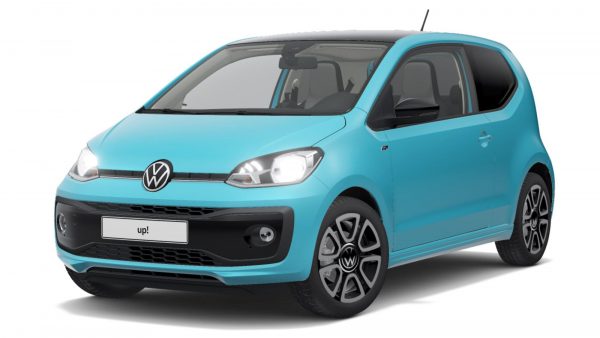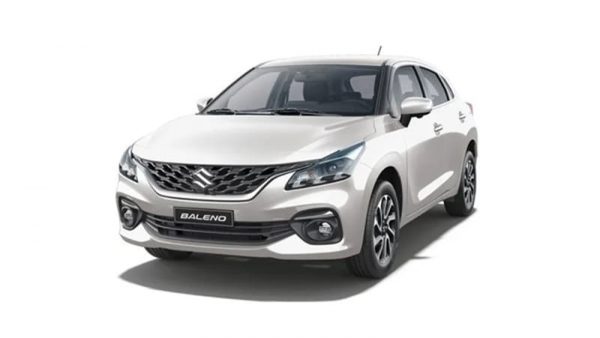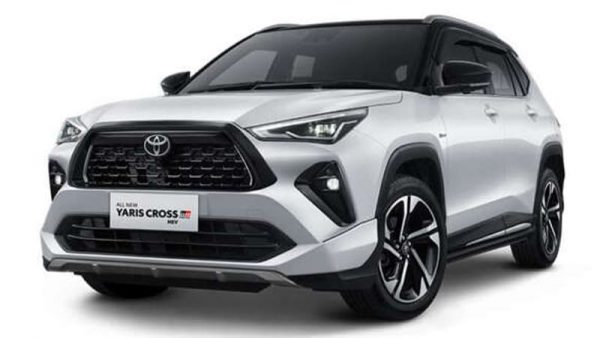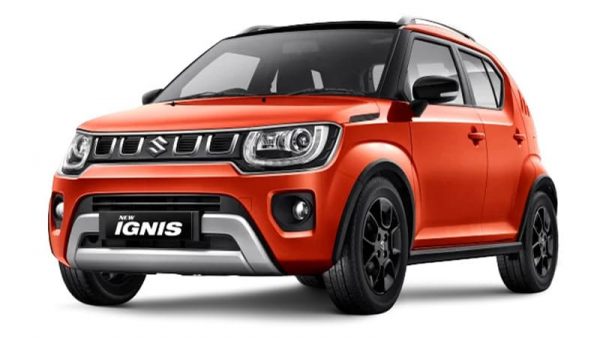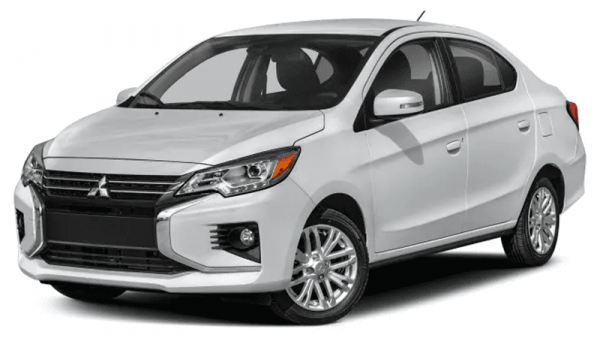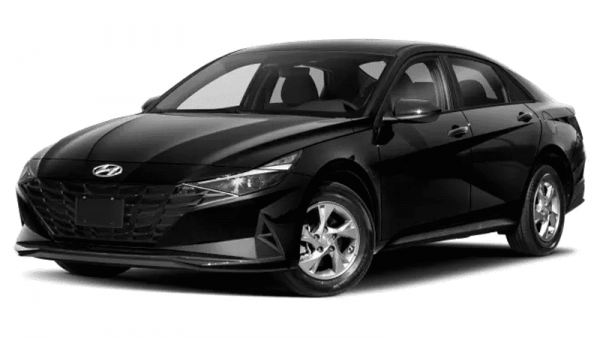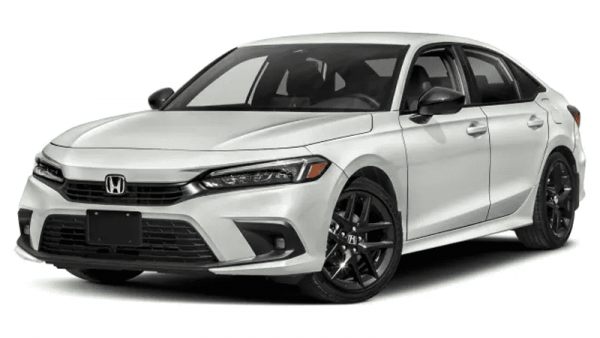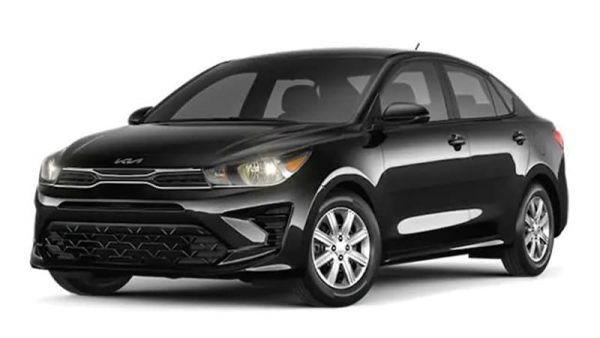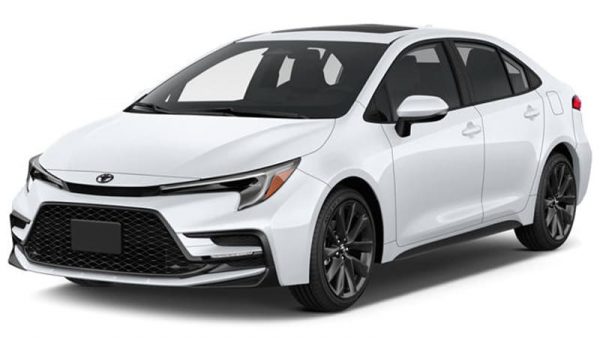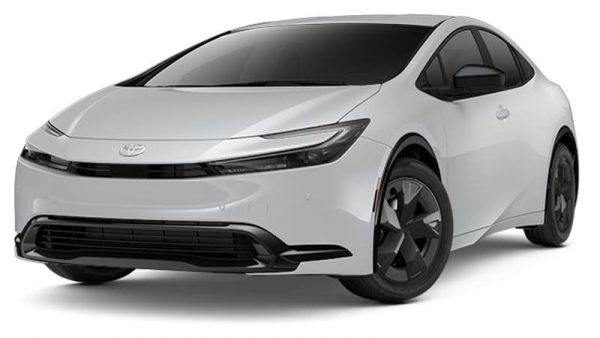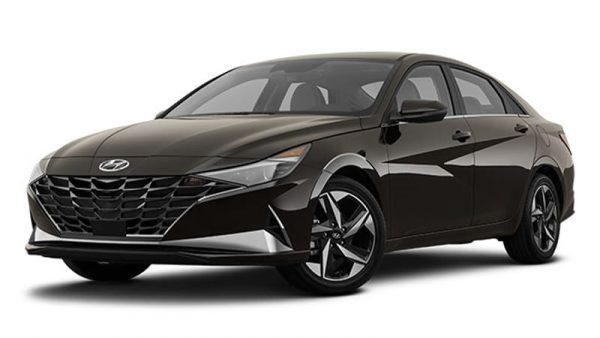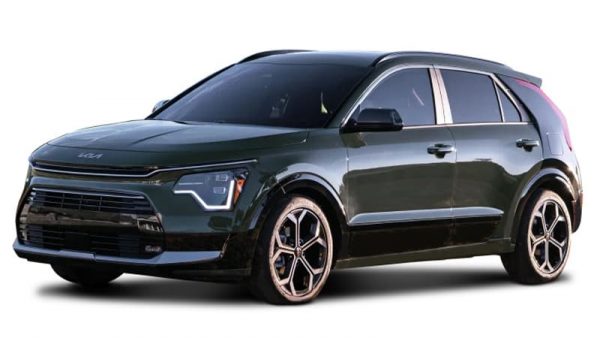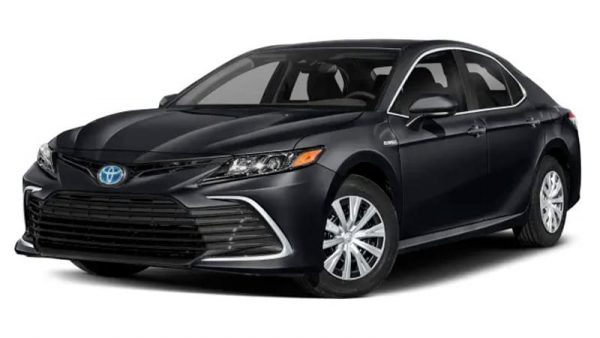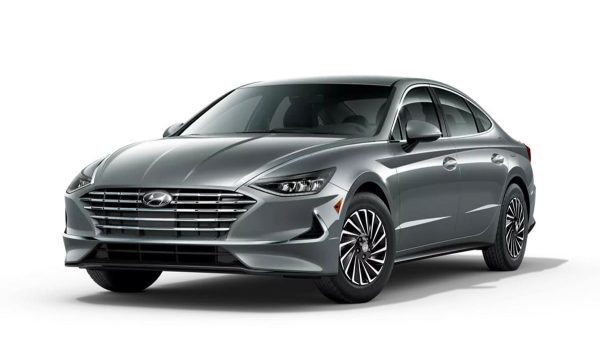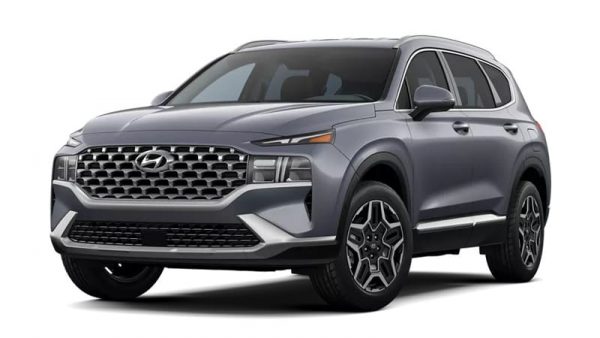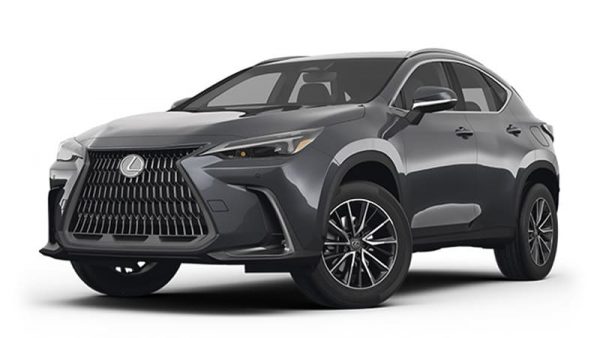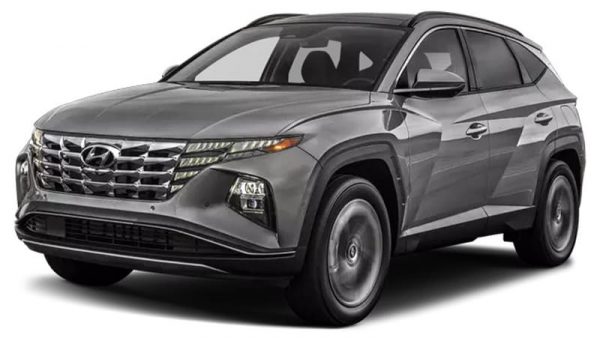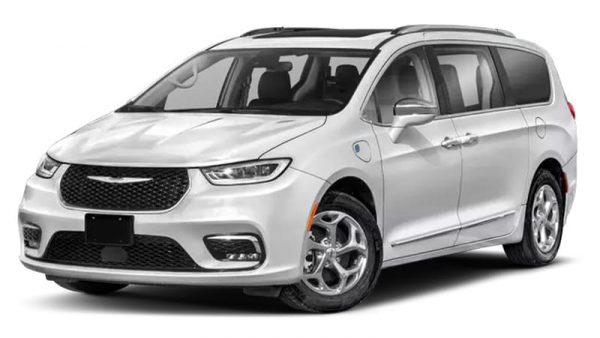The landscape of the automotive world is undergoing a seismic shift, with fuel efficiency emerging as a paramount criterion for both consumers and manufacturers. Our article, “Most Fuel-Efficient Cars,” is more than a mere list; it’s a comprehensive exploration into the world of vehicles that champion fuel economy while still delivering on performance, comfort, and style. In this era of heightened environmental awareness and economic savvy, understanding the nuances of fuel-efficient vehicles is not just about cost-saving measures; it’s a step towards embracing a sustainable future.
The journey toward fuel efficiency has been marked by significant milestones. In the past, a fuel-efficient car often meant a compromise in terms of power and luxury. However, the narrative has drastically changed. Today, the most fuel-efficient cars are a harmonious fusion of advanced engineering, innovative design, and a growing emphasis on electrification and alternative fuels. This transformation is not just a response to stricter environmental regulations or the fluctuating prices of fuel; it’s a reflection of a changing global consciousness where sustainability is as important as convenience.
Our in-depth analysis goes beyond the traditional metrics of miles per gallon (MPG) or electric equivalent (MPGe). We delve into the holistic experience these vehicles offer, encompassing aspects like ride quality, interior amenities, technological integrations, and aesthetic appeal. This article is tailored not only for the eco-conscious and budget-aware but also for those intrigued by the evolution of automotive technology. We aim to shed light on how these vehicles excel in fuel efficiency while striking a balance with other desirable features.
In profiling these top-performing vehicles, we’ll uncover the innovative elements—from hybrid powertrains to advanced aerodynamics and lightweight materials—that contribute to their efficiency. Our discussion extends to the broader impact of choosing a fuel-efficient vehicle: the environmental benefits of reduced emissions, the long-term cost savings, and the growing infrastructure that supports sustainable motoring. Our journey through this landscape of efficiency and innovation will provide a comprehensive view of how the most fuel-efficient cars are reshaping our roads and our attitudes towards personal transportation.
Join us in this enlightening exploration as we chart the progress of the automotive industry towards a greener, more efficient future. Through this article, we aim to inform, inspire, and ignite a conversation about the role of fuel-efficient vehicles in shaping a sustainable, economically viable, and environmentally responsible future.
Honda Jazz
Maximum Speed: Approximately 110 mph
Fuel Consumption (MPG): Around 55 city / 60 highway
Distance at 1 Refueling: Approximately 450 to 550 miles
The Honda Jazz, often celebrated for its extraordinary versatility, is more than just a supermini. It ingeniously combines the compactness of a small car with the practicality of a much larger vehicle. This is largely due to its innovative interior design, particularly the “Magic Seats” in the rear, which can fold completely flat or flip up, allowing for a variety of cargo and passenger configurations.
The Jazz also excels in the realm of efficiency and eco-friendliness. Many models come with hybrid powertrains, blending performance with environmental consciousness. The car’s exterior design, while not as flashy as some competitors, focuses on aerodynamics and functionality, leading to a smoother and more economical ride.
Seat Leon
Maximum Speed: Approximately 140 mph
Fuel Consumption (MPG): Around 35 city / 55 highway
Distance at 1 Refueling: Approximately 420 to 480 miles
The Seat Leon, a spirited competitor in the compact segment, brings a unique blend of Mediterranean design flair and German engineering. Its design is not only about aesthetics; it’s about expressing a more dynamic and youthful spirit. With a lower and wider stance compared to many of its rivals, the Leon offers a driving experience that is both engaging and comfortable.
Technologically, the Leon is a front-runner. It features a suite of advanced driver assistance systems and connectivity options, including Apple CarPlay and Android Auto, making it a tech-savvy choice. Its range of engines includes not only efficient petrol and diesel options but also cutting-edge mild-hybrid and plug-in hybrid variants, catering to the environmentally conscious driver.
Volkswagen Up
Maximum Speed: Approximately 106 mph
Fuel Consumption (MPG): Around 50 city / 65 highway
Distance at 1 Refueling: Approximately 350 to 450 miles
The Volkswagen Up redefines what it means to be a city car. It’s not just about being small and easy to park; the Up adds a layer of sophistication and quality often missing in this segment. Its minimalist design is deceptive, hiding a robust build quality and a surprisingly spacious and well-thought-out interior for its size. The Up is available in various trim levels, including the sporty Up GTI, which offers performance that belies its compact dimensions.
In terms of economy and environmental impact, the Up is a standout. Its range of small-capacity engines is designed for maximum efficiency, reducing both fuel consumption and emissions. For those looking for an eco-friendlier alternative, the e-Up version offers a fully electric powertrain with zero emissions.
Suzuki Baleno
Maximum Speed: Approximately 120 mph
Fuel Consumption (MPG): Around 45 city / 60 highway
Distance at 1 Refueling: Approximately 420 to 480 miles
The Suzuki Baleno is an intriguing entry in the supermini market, balancing size and efficiency in a unique package. It’s not just the car’s spacious interior and boot that impresses; it’s also its lightweight yet sturdy construction. This design philosophy contributes to the car’s nimble handling and excellent fuel efficiency, making it a joy to drive both in urban and rural settings.
The Baleno is also notable for its value proposition. It offers features typically found in more expensive cars, such as a touchscreen infotainment system, advanced safety features, and efficient yet powerful engines, including the Boosterjet turbocharged petrol engine. The Baleno, therefore, appeals to those who seek practicality, performance, and affordability in a single package.
Toyota Yaris Cross
Maximum Speed: Approximately 110 mph
Fuel Consumption (MPG): Around 52 city / 48 highway
Distance at 1 Refueling: Approximately 500 to 550 miles
The Toyota Yaris Cross emerges as a trailblazer in the crossover segment, skillfully merging the compact efficiency of the Yaris hatchback with the robust stance of an SUV. This vehicle is a standout in Toyota’s lineup, specifically tailored for those who desire the agility of a small car with the added benefit of SUV-like space and visibility. Its hybrid system is a centerpiece, showcasing Toyota’s commitment to eco-friendly technology. This system doesn’t just improve fuel efficiency; it also ensures a quieter, smoother ride, particularly in stop-and-go urban traffic.
Design-wise, the Yaris Cross doesn’t just blend in; it makes a statement. Its contemporary aesthetic is highlighted by a striking front fascia, angular contours, and an elevated ground clearance, conveying a sense of adventure. The interior is a sanctuary of modernity and comfort, with high-quality materials and a layout that maximizes both passenger and cargo space, a rarity in compact SUVs.
Suzuki Ignis
Maximum Speed: Approximately 100 mph
Fuel Consumption (MPG): Around 48 city / 54 highway
Distance at 1 Refueling: Approximately 350 to 400 miles
The Suzuki Ignis is a character-filled vehicle that breaks the mold of conventional city cars. Its design ethos is a bold amalgamation of retro and modern elements, making it instantly recognizable on the road. The Ignis’s elevated ride height and SUV-like features, such as roof rails and flared wheel arches, aren’t just aesthetic; they enhance its versatility, allowing it to tackle rougher urban roads more confidently than its city car counterparts.
Inside, the Ignis is surprisingly spacious, debunking the myth that small cars are cramped. The clever use of space and adjustable rear seats make it a flexible option for both passengers and cargo. Technologically, it’s equipped with features often found in more expensive cars, like touchscreen infotainment and smartphone connectivity, catering to the tech-savvy generation.
Suzuki Celerio
Maximum Speed: Approximately 96 mph
Fuel Consumption (MPG): Around 37 city / 46 highway
Distance at 1 Refueling: Approximately 380 to 430 miles
The Suzuki Celerio, often overlooked, is a hidden gem in the small car segment. It excels in delivering what it promises – unparalleled fuel efficiency and practicality in a no-nonsense package. The Celerio is designed with an ethos of simplicity and reliability. It’s a car that gets you from point A to B efficiently, without the distractions of over-the-top features or design elements. Its fuel economy is a boon for budget-conscious drivers, making it a wise choice for those who prioritize cost-effectiveness over luxury.
The Celerio’s interior is surprisingly roomy and well-thought-out, with smart storage solutions and enough room to comfortably seat adults. The car’s nimble size makes it a breeze to navigate and park in tight urban spaces. While it may not boast luxury features, it includes essential modern conveniences like air conditioning, power windows, and a functional infotainment system.
Mitsubishi Mirage
Maximum Speed: Approximately 100 mph
Fuel Consumption (MPG): Around 33 city / 41 highway
Distance at 1 Refueling: Approximately 350 to 400 miles
The Mitsubishi Mirage is a compact car that has made a name for itself primarily due to its affordability and efficiency. It’s often chosen for its cost-effectiveness, both in terms of initial purchase price and long-term fuel economy. A highlight of the Mirage is its exceptional fuel efficiency, which makes it a practical choice for city driving and for those looking to minimize their carbon footprint. Its compact size also makes it ideal for navigating tight urban spaces and for easy parking.
The Mirage is not known for high-performance driving; rather, it’s designed for practicality and efficiency. The engine is tuned for economy, offering modest horsepower but excellent miles per gallon. The interior, while basic, provides essential features and a user-friendly interface, prioritizing functionality over luxury. The Mirage’s ride quality is comfortable enough for daily commutes, but it may lack the refinement found in some competitors.
Hyundai Elantra
Maximum Speed: Approximately 130 mph
Fuel Consumption (MPG): Around 33 city / 43 highway
Distance at 1 Refueling: Approximately 400 to 450 miles
The Hyundai Elantra stands out for its blend of style, comfort, and technology. Recently redesigned, it features a more aggressive and modern exterior, making it one of the more stylish cars in its class. The interior is equally impressive, with a focus on higher-quality materials and advanced technology. The Elantra is equipped with an array of safety features and infotainment options, catering to a tech-savvy audience.
The Elantra offers a balanced mix of performance and efficiency. It’s more powerful than the Mirage, providing a more engaging driving experience. The ride is smooth and the handling is competent, making it suitable for both city and highway driving. Hyundai has also focused on making the cabin quiet and comfortable, enhancing the overall driving experience.
Honda Civic
Maximum Speed: Approximately 125 mph (varies with engine choice)
Fuel Consumption (MPG): Around 30 city / 38 highway (varies with engine choice)
Distance at 1 Refueling: Approximately 350 to 450 miles
The Honda Civic is a legend in the compact car segment, renowned for its reliability, resale value, and well-rounded performance. It offers a more engaging driving experience compared to the Mirage and competes closely with the Elantra in terms of technology and style. The Civic is known for its sporty handling, responsive engine options, and well-designed interior that balances comfort and practicality.
The Civic excels in providing a dynamic driving experience without sacrificing fuel efficiency. It offers a range of engine choices, including more powerful options for those who prioritize performance. The interior is spacious, with high-quality materials and a design that is both functional and aesthetically pleasing. The Civic also boasts impressive safety ratings and a suite of driver-assistance features.
Kia Rio
Maximum Speed: Approximately 115-120 mph
Fuel Consumption (MPG): Around 33 city / 41 highway
Distance at 1 Refueling: Approximately 400 to 450 miles
The Kia Rio, a subcompact car, stands out for its combination of affordability, stylish design, and practicality. With its most recent models, it has evolved into a more refined vehicle, offering an impressive balance between comfort and efficiency. The Rio is particularly notable for its user-friendly infotainment system and a comfortable interior that belies its budget-friendly status. Its ride is smooth, and handling is composed, making it a reliable choice for daily commuting.
One of the key advantages of the Kia Rio is its fuel economy, which makes it a cost-effective option for budget-conscious drivers. The car’s compact size also makes it easy to maneuver in urban settings and simple to park in tight spaces. The Rio doesn’t sacrifice safety for size; it typically includes a range of standard safety features that add to its appeal as a practical city car. However, its smaller size may not suit those needing ample cargo space or a vehicle for larger families.
Toyota Corolla
Maximum Speed: Approximately 112-118 mph
Fuel Consumption (MPG): Around 30 city / 38 highway for standard models, 53 city / 52 highway for hybrid models
Distance at 1 Refueling: Approximately 450 to 550 miles, higher for hybrid models
The Toyota Corolla, one of the best-selling cars globally, is renowned for its reliability and longevity. This compact sedan is a staple in the Toyota lineup and has built a reputation for being an economical yet dependable vehicle. The latest models of the Corolla are more stylish and feature-rich than ever before, offering a comfortable interior, advanced safety features, and an increasingly efficient powertrain.
What sets the Corolla apart is its well-rounded nature. It isn’t just a practical choice; recent models have seen a marked improvement in driving dynamics and interior quality. The Corolla comes in various trims, including a more performance-focused SE or XSE model, which offers a more engaging driving experience. The Corolla Hybrid variant is a game changer in terms of fuel efficiency, making it an excellent choice for environmentally conscious consumers and those looking to minimize fuel costs.
Toyota Prius
Maximum Speed: Approximately 112 mph
Fuel Consumption (MPG): Around 54 city / 50 highway
Distance at 1 Refueling: Approximately 550 to 600 miles
The Toyota Prius is synonymous with the hybrid car movement and is famed for its environmental credentials and fuel efficiency. Over the years, the Prius has become more than just a practical choice; it’s a statement about one’s commitment to reducing their carbon footprint. The design of the Prius is distinctive, and geared towards maximizing aerodynamics to improve fuel efficiency.
One of the unique aspects of the Prius is its hybrid powertrain, which seamlessly switches between gasoline and electric power to optimize fuel consumption and reduce emissions. The interior is surprisingly spacious, and the latest models come with a host of tech features, including an advanced infotainment system and numerous driver-assistance technologies. The Prius also offers a smooth ride and is exceptionally quiet, especially when running on electric power.
Hyundai Elantra Hybrid
Maximum Speed: Approximately 115 mph
Fuel Consumption (MPG): Around 54 city / 50 highway
Distance at 1 Refueling: Up to 600 miles
The Hyundai Elantra Hybrid stands out for its sleek design, blending modern aesthetics with aerodynamic efficiency. This vehicle is particularly notable for its impressive fuel economy, which is a result of its advanced hybrid powertrain combining an electric motor with a gasoline engine. The interior of the Elantra Hybrid is designed with both comfort and technology in mind, featuring a spacious cabin with high-quality materials and state-of-the-art infotainment systems.
One of the Elantra Hybrid’s unique attributes is its focus on driver assistance technology. It offers a range of features like lane-keeping assist, adaptive cruise control, and an optional 10.25-inch touchscreen display that enhances the driving experience. Moreover, its regenerative braking system is finely tuned to maximize energy recovery without compromising the driving feel. The Elantra Hybrid differs from its counterparts in its emphasis on a sporty yet eco-friendly driving experience, appealing to those who desire efficiency without sacrificing style and performance.
Kia Niro Hybrid
Maximum Speed: Approximately 104 mph
Fuel Consumption (MPG): Around 53 city /48 highway
Distance at 1 Refueling: Up to 595 miles
The Kia Niro Hybrid is celebrated for its crossover SUV design, offering a practical balance between the spaciousness and high driving position of an SUV and the fuel efficiency of a hybrid. Its distinctive feature is the versatility it offers, being ideal for both city driving and longer journeys. The Niro Hybrid boasts a stylish yet robust exterior, while its interior is crafted for comfort and functionality, with ample cargo space and advanced connectivity features.
What sets the Niro Hybrid apart is its commitment to a user-friendly experience, with intuitive controls and a focus on ergonomic design. It offers a smooth and quiet ride, thanks to its well-tuned suspension and efficient hybrid powertrain. The vehicle also stands out in terms of safety, featuring a comprehensive suite of advanced driver assistance systems. Compared to other hybrids, the Niro offers a more SUV-like experience, making it a perfect choice for families who need the extra space and versatility without compromising on fuel efficiency.
Toyota Camry Hybrid
Maximum Speed: Approximately 115 mph
Fuel Consumption (MPG): About 51 city / 53 highway
Distance at 1 Refueling: Up to 686 miles
The Toyota Camry Hybrid is renowned for its blend of traditional sedan comfort with advanced hybrid efficiency. It stands out for its smooth and refined ride quality, coupled with a spacious and well-appointed interior. The Camry Hybrid is known for its reliability and longevity, attributes synonymous with the Toyota brand. Its exterior design is elegant and contemporary, appealing to a broad range of consumers.
Unique to the Camry Hybrid is its strong performance for a hybrid vehicle, offering brisk acceleration and responsive handling. The vehicle is equipped with Toyota’s Hybrid Synergy Drive system, which provides an excellent balance of power and efficiency. In comparison to its peers, the Camry Hybrid leans more towards a traditional sedan feel, with an emphasis on comfort and quietness, making it ideal for long drives and daily commuting.
Hyundai Sonata Hybrid
Maximum Speed: Approximately 120 mph
Fuel Consumption (MPG): Around 50 city / 54 highway
Distance at 1 Refueling: Up to 650 miles
The Hyundai Sonata Hybrid is known for its striking design and sophisticated technology. This sedan stands out with its bold and futuristic exterior, complete with aerodynamic contours. Inside, the Sonata Hybrid impresses with a luxurious and tech-forward cabin, featuring a large infotainment display and high-quality materials throughout.
A defining feature of the Sonata Hybrid is its solar roof, which helps charge the battery, thereby extending the electric-only range and improving overall fuel efficiency. This feature sets it apart from its competitors, showcasing Hyundai’s commitment to innovative green technology. The Sonata Hybrid also offers a smooth and quiet ride, with a suspension tuned for comfort. Compared to others in its class, it offers a more upscale and technologically advanced experience, catering to those who seek a blend of luxury, efficiency, and innovation.
Hyundai Santa Fe Plug-in Hybrid
Maximum Speed: Approximately 120 mph
Fuel Consumption (MPG): Around 33 city / 30 highway
Electric Range: Up to 30 miles on a full charge
Total Range: Over 500 miles
The Hyundai Santa Fe Plug-in Hybrid is a testament to Hyundai’s commitment to eco-friendly yet powerful vehicles. This model stands out with its robust plug-in hybrid system, combining a 1.6-liter turbocharged engine with an electric motor, delivering a combined output that offers both efficiency and performance. The Santa Fe Plug-in Hybrid excels in providing a comfortable ride, ample cabin space, and advanced safety features, making it a top choice for families.
Its electric-only range is particularly noteworthy, allowing for short commutes or city driving to be completely emissions-free. The vehicle’s interior is adorned with high-quality materials, and the infotainment system is both user-friendly and rich in features. The Santa Fe’s all-wheel-drive system also ensures reliable performance in various road conditions, making it a versatile choice for different driving needs.
Lexus NX 450h+
Maximum Speed: Approximately 124 mph
Fuel Consumption (MPG): Around 36 city / 31 highway
Electric Range: Up to 37 miles on a full charge
Total Range: Approximately 550 miles
The Lexus NX 450h+ stands as a luxurious beacon in the realm of plug-in hybrids. This vehicle is a part of Lexus’s renowned lineup, known for combining opulence with eco-conscious performance. The NX 450h+ is powered by a 2.5-liter four-cylinder engine paired with an electric motor, delivering a seamless driving experience that’s both quiet and efficient.
What sets the NX 450h+ apart is its emphasis on luxury and comfort. The interior is a haven of high-end materials, sophisticated design, and cutting-edge technology. Lexus’s attention to detail is evident in every aspect, from the intuitive infotainment system to the meticulously crafted seats. Additionally, the NX 450h+ offers one of the longest electric-only ranges in its class, making it an ideal choice for those looking to minimize their carbon footprint without compromising on luxury.
Hyundai Tucson Plug-in Hybrid
Maximum Speed: Approximately 120 mph
Fuel Consumption (MPG): Around 35 city / 33 highway
Electric Range: Up to 33 miles on a full charge
Total Range: Over 500 miles
The Hyundai Tucson Plug-in Hybrid is a dynamic addition to the compact SUV market, offering a perfect blend of efficiency, performance, and versatility. It features a 1.6-liter turbocharged engine paired with an electric motor, resulting in a responsive and economical driving experience. The Tucson stands out with its bold design, spacious interior, and a plethora of technological advancements.
Its plug-in hybrid system not only ensures low emissions but also provides ample power for a spirited driving experience. The vehicle’s interior is thoughtfully designed, offering comfort and convenience with features like a user-friendly infotainment system and ample cargo space. The Tucson Plug-in Hybrid also boasts an impressive electric-only range, making it ideal for daily commuting and reducing fuel consumption.
Volvo V60 Recharge
Maximum Speed: Approximately 155 mph
Fuel Consumption (MPG): Around 30 city / 33 highway
Electric Range: Up to 22 miles on a full charge
Total Range: Approximately 520 miles
The Volvo V60 Recharge represents a unique fusion of Scandinavian design and eco-friendly performance. This luxury wagon is equipped with a powerful plug-in hybrid powertrain, combining a turbocharged and supercharged engine with an electric motor. This blend not only provides impressive acceleration but also ensures fuel efficiency and a lower carbon footprint.
The V60 Recharge’s interior is a masterpiece of minimalistic design, emphasizing comfort and practicality without sacrificing elegance. The vehicle is equipped with advanced safety features, a hallmark of Volvo’s commitment to passenger protection. Despite its modest electric-only range, the V60 Recharge is perfect for those who appreciate a balance between performance, luxury, and environmental consciousness, all wrapped in a stylish wagon body.
Chrysler Pacifica Hybrid
Maximum Speed: Approximately 110 mph
Fuel Consumption (MPG): Around 30 city / 30 highway
Electric Range: Up to 32 miles on a full charge
Total Range: Approximately 520 miles
The Chrysler Pacifica Hybrid redefines the family minivan with its innovative plug-in hybrid technology. It is powered by a 3.6-liter V6 engine coupled with an electric motor, delivering a smooth and efficient ride. This minivan is ideal for families, offering a spacious and versatile interior, abundant safety features, and user-friendly technology.
What sets the Pacifica Hybrid apart is its practicality and efficiency. The electric-only range is sufficient for most daily commutes, and the transition between electric and hybrid modes is seamless. The interior space is vast, with flexible seating arrangements and ample storage solutions, making it perfect for family trips or hauling cargo. The Pacifica Hybrid is a standout in the minivan segment, offering an eco-friendly option without compromising on the space and versatility that families need.
Conclusion
In wrapping up our discussion on the most fuel-efficient automobiles, it’s clear that the industry has undergone a remarkable transformation. This evolution in car manufacturing is not merely a technical achievement but a response to the global call for environmental stewardship and sustainable living. The cars we’ve examined in this article are at the forefront of this change, showcasing an impressive amalgamation of innovation, practicality, and environmental consciousness.
Each model we’ve discussed brings its own unique approach to fuel efficiency. From cutting-edge improvements in traditional combustion engines to the integration of hybrid technologies and the progressive adoption of electric vehicles, the variety in these approaches illustrates a vital truth: achieving optimal fuel efficiency is a complex task that requires diverse strategies. This variety ensures that consumers are not boxed into a single type of vehicle but have the liberty to choose one that aligns with their lifestyle and values.
The mainstreaming of these fuel-efficient vehicles marks a significant shift in consumer options. No longer limited to the periphery of automotive choices, these cars now cater to a broad spectrum of needs, whether it be for urban commuting, family travel, or luxury experiences. Their widespread availability is crucial in promoting a broader shift towards more sustainable modes of transport.
From a financial perspective, the appeal of fuel-efficient cars is increasingly evident. With the economic pressures of rising fuel costs and environmental levies, the long-term savings on fuel and potential tax benefits present a compelling case. While the upfront costs can be a hurdle, this is gradually being offset by more competitively priced models and supportive government policies.
As we look ahead, the momentum towards more fuel-efficient vehicles seems set to accelerate. This trajectory is fueled by stricter emission norms, advancing technology, and a growing consumer appetite for eco-friendly alternatives. Future innovations in battery technology, renewable fuels, and vehicle design are poised to further enhance the efficiency and appeal of these cars.
In summary, today’s fuel-efficient vehicles are more than mere modes of transportation; they represent a significant stride towards a sustainable and economically sensible future in personal mobility. Their continued evolution and adoption are crucial, not just for environmental reasons but for shaping a more efficient and responsible approach to transportation. These vehicles stand as a testament to human ingenuity and a commitment to a healthier planet.

